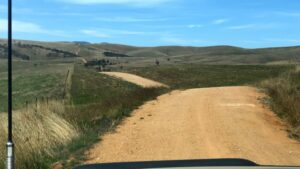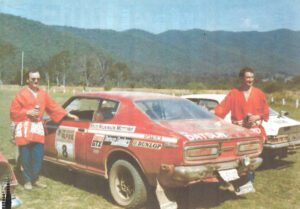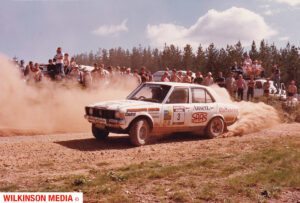Many of us have recently seen a video from an Irish rally crew about their experiences using Rallysafe. I found it interesting that they are so keen on the concept and are pushing its use in Irish rallying. In Australia we almost take Rallysafe for granted – it has become an essential part of our sport.
A couple of observations I made from the video are:
The mounting and location of the Rallysafe unit is critical.
- It needs to be firmly mounted so it gives accurate information about G forces involved in a crash. This information alerts the Safety Team about the potential seriousness of the impact and informs how they react. If the unit moves during impact the G-force information won’t be accurate – and a serious incident may be mis-reported.
- The unit needs to be easily seen by both crew members so that warnings and other information are quickly received. In the video the driver saw the serious warning before the co-driver, who was head down reading notes. Put the unit in line of sight for both driver and co-driver – NOT down low or on the floor!
Crews must be familiar with all the functions and how they work
- Virtual Chicanes – if you slow down quickly on entering the chicane, get confirmation from Rallysafe, you can then speed up again well before leaving the VC zone.
- Push to Pass – this function only works within a pre-set distance from a slower car in front eg, 500 metres. If you’re further apart the function will not be available. Of course, it’s also crucial the slower crew see the warning on their Rallysafe unit and respond to it.
- Hazard warnings – these will give you information about serious crashes where you need to stop and give assistance as well as less serious incidents where you simply slow down and exercise caution.
Crews need to familiarise themselves with the different screens and colours that the Rallysafe unit uses. This video will help with that it is worth a few views and bookmarking.
From an event organisers’ perspective Rallysafe has become absolutely indispensable. It gives accurate and timely information on the location, speed and safety of all competitors in the event at all times. It can also provide “live” stage times which assist in timely scoring and results – we used this feature in the 2019 Alpine.
Rallysafe is used in WRC events and getting wide international acceptance in both gravel and tarmac rallying – as well as other sports like speedboat racing.
Rallysafe all started here, in Tasmania, and is a great example of Aussie ingenuity on the worldwide stage. Kudos to the Rallysafe team – hope you enjoy Ireland!
Owen Polanski
Alpine Rally Clerk of Course



